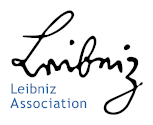- The Institute
- Research
- Dictatorships in the 20th Century
- Democracies and their Historical Self-Perceptions
- Transformations in Most Recent History
- International and Transnational Relations
- Edited Source Collections
- Dissertation Projects
- Completed Projects
- Dokumentation Obersalzberg
- Center for Holocaust Studies
- Berlin Center for Cold War Studies
- Publications
- Vierteljahrshefte
- The Archives
- Library
- Center for Holocaust Studies
- News
- Dates
- Press
- Recent Publications
- News from the Institute
- Topics
- Munich 1972
- Confronting Decline
- Feminist, Pacifist, Provocateur
- Der Mauerbau als Audiowalk
- Digital Contemporary History
- Transportation in Germany
- Envisaged Futures at the End of the Cold War
- From the Reichsbank to the Bundesbank
- German Federal Chancellery
- History of Sustainabilities: Discourses and Practices since the 1970s
- Changing Work
- Democratic Culture and the Nazi Past
- The History of the Treuhandanstalt
- Foreign Policy Documentation (AAPD)
- Dokumentation Obersalzberg
- Hitler, Mein Kampf. A Critical Edition
- "Man hört, man spricht"
- Dictatorships in the 20th Century
- Democracies and their Historical Self-Perceptions
- Transformations in Most Recent History
- International and Transnational Relations
- Edited Source Collections
- Dissertation Projects
- Completed Projects
- Dokumentation Obersalzberg
- Center for Holocaust Studies
- Berlin Center for Cold War Studies
An Occupied Public. German Informational Politics, Popular Narratives and the Public Perception of the Occupier in French Wartime Society (1940-44).
Employees (IfZ):
Dr. des. Manuel Mork
Projektinhalt:
For a regime, whose aspiration is total control over the political communication of a society, private conversation poses a fundamental problem. This was true also for the German military occupation of France during the Second World War. Between 1940 and 1944, several institutions of the occupier were charged with establishing a German monopoly of information, thus attempting to shape a uniform, heavily regimented public sphere suitable to frame an occupation as devoid of resistance as possible. In reality, mistrust towards German-controlled media was almost universal, while foreign radio broadcasts were immensely successful and popular narratives in the form of rumours, prophecies and jokes constituted a veritable “black market of information” (Jean-Noël Kapferer). Below and beyond the public sphere instituted by the collaboration-friendly mass media, the formation of opinions in occupied France must have, to an ever growing extent, occurred in the informal sphere centred around bistros, queues and market places.
To attempt at grasping this informal sphere, which seems rather intangible in retrospect, but must have been an ever-present point of reference for millions of French during the war, the study rests upon three principal methodological decisions: First, it aims at reconstructing a restricted field of contemporary political discussion only, namely the public perception of the occupier in French society. How, it asks, did the French perceive the German occupier? What kind of stories circulated amongst the population and how did the occupational authorities react to these? Which motives of German propaganda were successful amongst the French? The Third Reich as a stronghold against Bolshevism? The Wehrmacht as an undefeatable force? Or, as one might also assume, was the sphere of interpersonal communication dominated by the subversion of German self-portrayal, hence constituting a veritable “counter-public” (Nancy Fraser et al.)?
Second, the study focuses on the impact of four types of popular narratives that supposedly dominated the informal public, namely rumours, historical analogies, prophecies and jokes. How were the dramatic experiences brought about by war and occupation processed by means of these different kinds of narratives? What respective function(s) did each type fulfil for members of the French population? Were they transmitted in distinct ways? Did the German propaganda apparatus itself adopt these specific styles of narration? And how did factors of political orientation, social and legal status, geographic location and gender influence which specific narratives were picked up?
Third, the study aims at illuminating both the official representation by the German-controlled media as well as the popular narratives concerning specific moments or episodes of war and occupation only. Specifically, these are events that were treated with an elevated degree of secrecy in the press, mainly because future military operations were supposed to remain concealed or actual proceedings of the war were deemed counterproductive from a propagandistic perspective. At a time when the fate of France could be seen as imminently linked to the diverse, worldwide theatres of war, even the most distant military events could stimulate the imagination of a wider public. As a consequence, the “Battle of Britain”, “Operation Barbarossa” and the war in Northern Africa potentially gave rise to plentiful speculations and narratives in the French population. But how did they relate to the official account in the media? And which stories were capable of substantially undermining the German monopoly of information?
By employing a wide range of sources – mainly diaries, newspapers, documents of the German Propaganda-Abteilung, French and German opinion reports on a national and regional level, and court files – the study attempts at providing approximate answers to the abovementioned questions, thereby approaching the problem of “public opinion” from a new angle and aiming at a differentiated portrayal of a public sphere under military occupation.





